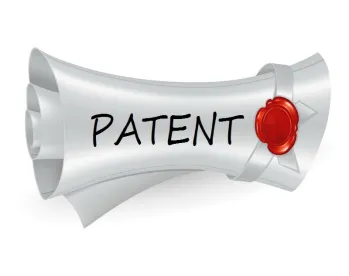Takeaway: In an obviousness analysis, the person of ordinary skill in the art is not presumed to be an automaton, but is rather one who is able to envision applications of the teachings of the prior art beyond that explicitly disclosed.
In its Final Written Decision, after having instituted trial on some of the challenged claims, the Board found that Petitioner had shown by a preponderance of the evidence that claims 1-11, 15, and 17-26 of the ’832 patent are unpatentable. The Board also denied Petitioner’s Motion to Exclude.
The ’832 patent relates to “a trajectory detection and feedback system, useful to evaluate trajectory parameters of a basketball shot at a basketball hoop.” The Board first addressed claim construction of the unexpired patent under the broadest reasonable interpretation in light of the specification.
The Board construed the term related to the location of velocity determination: “including trajectory locations after the basketball enters the basketball hoop.” Patent Owner argued that the velocity determination should be limited to “post-hoop velocity” or velocity of the basketball after it enters the hoop as opposed to entry velocity of the basketball. Petitioner argued that the term was not so limited and “is broad enough to include the entry velocity,” pointing to an earlier recitation in the claims of “one or more trajectory locations near the basketball hoop.” The Board found that Patent Owner’s proposed construction was unreasonably narrow, and was persuaded that Petitioner’s interpretation was consistent with the broadest interpretation in light of the specification.
The Board then addressed Petitioner’s Motion to Exclude a table in paragraph 34 of Dr. Silverberg’s Declaration (Ex. 2001), and all testimony related to that table. In particular, Petitioner objected to the table because Dr. Silverberg “did not provide—at least as of the conclusion of Dr. Silverberg’s deposition—source data for the numbers in the table,” and cited to 37 C.F.R. § 42.65(a) in arguing that such testimony without underlying facts or data should be entitled little or no weight. Patent Owner argued that the testimony is admissible as it “is founded on his considerable experience,” and that the motion goes “to weight and not admissibility.” The Board agreed with Patent Owner and denied the motion.
Turning to the obviousness ground based on Marinelli and Mullaney, Patent Owner argued that the prior art did not teach measurement of entry angle and velocity of the basketball, as allegedly required by the independent claims, but rather taught calculation of those values. The Board was not persuaded, finding the argument to be not commensurate in scope with the claims. In particular, the Board noted that the claims require “a processor configured to determine the angle and velocity,” which includes “determination by calculation.” Further, the Board was persuaded by Petitioner’s argument that entry velocity and angle were known to be important characteristics in basketball, and that it would have been obvious to apply the disclosure in Marinelli of a modern “accelerometer network and process, to moveable sports objects in order to determine trajectory characteristics.”
The Board also found Patent Owner’s argument regarding post-hoop velocity unpersuasive because the Board did not adopt Patent Owner’s proposed claim construction. Patent Owner also argued that the Marinelli reference only disclosed measurement of spin rate, having no application in basketball. The Board disagreed with the premise that spin rate has no relevance, but even if so, the Board was still not persuaded because Marinelli also disclosed “the determination of various trajectory characteristics of moving sports objects, not only spin.” As the Board noted, it “will not presume that the person of ordinary skill in the art is an automaton unable to envision applications of the teachings beyond that explicitly disclosed.”
The Board also addressed an argument related to whether Marinelli provided an enabling disclosure that arose from questioning during the oral hearing. Even though the judges apparently elicited the argument from counsel for Patent Owner during the hearing, the Board noted that the argument was not found in Patent Owner’s papers, and counsel’s argument at the hearing cannot serve as a substitute for evidence.
As to the dependent claims, Patent Owner did not argue them separately. Thus, the Board found that Petitioner had shown by a preponderance of the evidence that claims 1-6, 11, 15, 21, 23, 25, and 26 would have been obvious over Marinelli and Mullaney. The Board also found that Petitioner had established unpatentability of claims 7-10, 17-20, 22, and 24 on the remaining grounds for similar reasons.
Infomotion Sports Tech., Inc. v. Pillar Vision, Inc., IPR2014-00764
Paper 30: Final Written Decision
Dated: November 12, 2015
Patent: 8,622,832 B2
Before: Ken B. Barrett, James P. Calve, and Jacqueline Wright Bonilla
Written by: Barrett
Related Proceedings: Pillar Vision, Inc. v. InfoMotion Sports Technologies, Inc., No. 2:14-cv-00043-RDP (N.D. Ala. filed Jan. 8, 2014)



 />i
/>i

